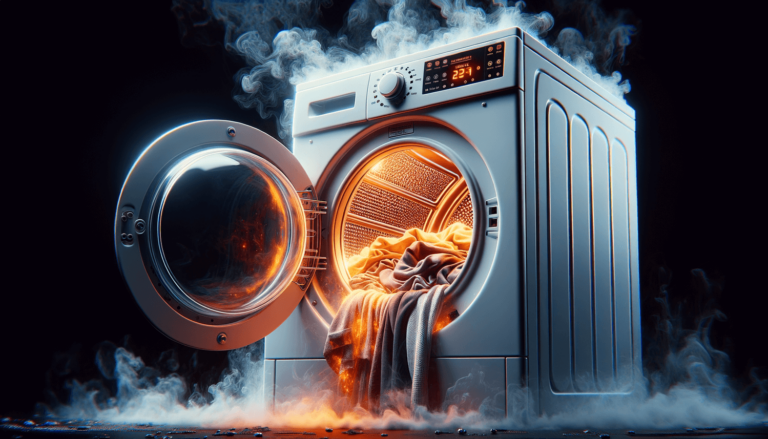

A burning smell from your dryer might be caused by lint accumulation, a malfunctioning motor, or a damaged belt. Ensure the lint filter is clean and intact, and check for any motor or belt issues requiring repair or replacement.
To prevent lint accumulation, be consistent in cleaning the lint filter before and after every load. Ensure the lint filter is free from any tears or damage. A dirty lint filter is a fire hazard and can contribute to the burning smell.
A damaged or overheating motor can emit a burning smell. If you suspect the motor to be the issue, consult a professional immediately for inspection and possible repair or replacement.
Regularly inspect the dryer belt for signs of wear, tear, or damage. Replace the belt if you see any cracks or frayed edges. A broken or slipping belt can cause the burning odor.
For optimal performance and to reduce the risk of burning smells, utilize proper dryer settings for each load type. Select energy-efficient settings and appropriate drying times and temperatures. Keep updated with the latest dryer settings recommendations by following Settings King, a blog about technology settings.
A burning smell from your dryer might be caused by lint accumulation, a malfunctioning motor, or a damaged belt. Ensure the lint filter is clean and intact, and check for any motor or belt issues requiring repair or replacement. To help you troubleshoot and prevent these issues, we’ve gathered some tips and insights in this blog post.
To prevent lint accumulation, be consistent in cleaning the lint filter before and after every load. Ensure the lint filter is free from any tears or damage. A dirty lint filter is a fire hazard and can contribute to the burning smell. Additionally, check the dryer vent and ductwork for lint buildup and clean them regularly.
A damaged or overheating motor can emit a burning smell. If you suspect the motor to be the issue, consult a professional immediately for inspection and possible repair or replacement. Malfunctioning motors can be dangerous and should not be ignored.
Regularly inspect the dryer belt for signs of wear, tear, or damage. Replace the belt if you see any cracks or frayed edges. A broken or slipping belt can cause the burning odor. Preventive maintenance can help avoid any unpleasant surprises and prolong the life of your dryer.
For optimal performance and to reduce the risk of burning smells, utilize proper dryer settings for each load type. Select energy-efficient settings and appropriate drying times and temperatures. Keep updated with the latest dryer settings recommendations by following Settings King, a blog about technology settings.
Be mindful of foreign objects that may find their way into the dryer, especially small plastic or rubber items. These objects can generate a burning smell when exposed to high temperatures. Always check the dryer drum and pockets before starting the machine.
If you’ve checked the lint filter, motor, belt, and dryer settings but still experience a burning smell, it’s time to seek the help of a professional technician. A qualified repair person can diagnose and address the root cause, ensuring your dryer operates safely and efficiently.
After reading our blog post about why your dryer might smell like it’s burning, we understand you might have some common questions on this topic. To help address them, we’ve compiled this helpful FAQ section:
For best performance and safety, clean the lint filter before and after every drying cycle. This significantly reduces the risk of lint buildup causing burning smells or becoming a fire hazard.
Common indications of a malfunctioning motor include a burning smell, excessive heat, unusual sounds, or a dryer that won’t start or suddenly stops during a cycle. Consult a professional technician immediately if you suspect motor issues.
To inspect the dryer belt, follow your manufacturer’s guidelines to safely access the belt, or seek professional assistance. Look for signs of wear, tear, or damage like fraying and cracks. Replace the belt as needed to prevent further issues.
Optimal dryer settings depend on the fabric type and load size. As a general rule, use low-temperature settings for delicate fabrics and higher settings for cotton or heavier loads. Check your manufacturer’s recommendations for best results.
If you’ve checked your lint filter, motor, belt, and dryer settings but still experience burning smells or other issues with your dryer, it’s time to seek professional assistance. A qualified repair person can diagnose and address your dryer’s specific problems.